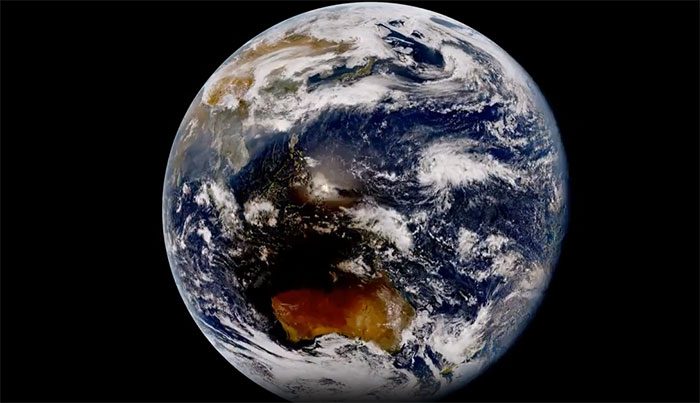The Himawari weather satellite from Japan detected a hybrid solar eclipse on April 19 from its geostationary orbit at an altitude of 36,000 km, which is ten times higher than the International Space Station.
The shadow of the Moon glides across the Earth during the hybrid solar eclipse. (Video: Simon Proud).
Weather scientist Simon Proud, who works with the UK Earth Observation Center, processed the data and shared it on social media platform Twitter on April 20. In the video, the shadow of the Moon gradually moves from left to right.
On April 19 and 20, the Moon moved in front of the Sun, creating a solar eclipse in various regions on Earth. However, this event is quite rare because it is a hybrid solar eclipse, which appears differently when viewed from various locations around the globe, such as an annular eclipse, total eclipse, or partial eclipse. The shadow of the Moon swept across Western Australia to East Timor and Indonesia from 9:36 PM on April 19 to 2:59 AM on April 20 local time (9:36 AM to 2:59 PM Hanoi time on April 20).

The shadow of the Moon gradually moves from left to right.
A hybrid solar eclipse results from two factors: the curvature of the Earth and the shadow of the Moon. The shadow of the Moon consists of two parts: the outer, lighter, and shallower shadow known as the penumbra, and the darker inner shadow known as the umbra. During a hybrid solar eclipse, when the shadow of the Moon falls on the Earth, the planet is within the penumbra and only an annular eclipse can be observed. However, as the shadow sweeps across the surface of the planet, the curvature of the Earth causes some areas to fall into the umbra and experience a total eclipse.
Hybrid solar eclipses usually have two points of transition when a total eclipse shifts to an annular eclipse. This occurs because the curvature of the Earth once again moves away from the umbra and into the penumbra. According to Carter, both transition points are located in remote areas in the ocean.





















































